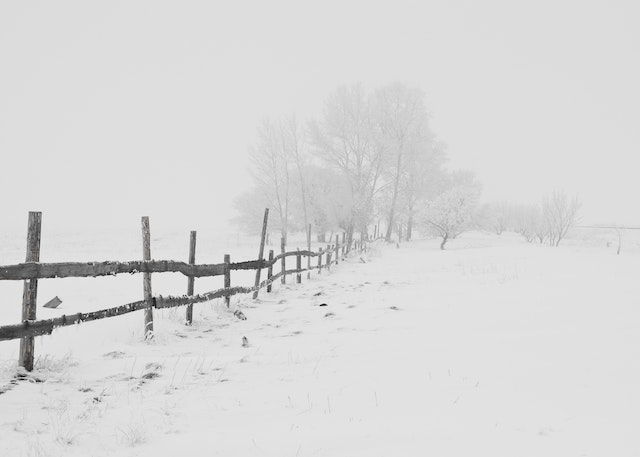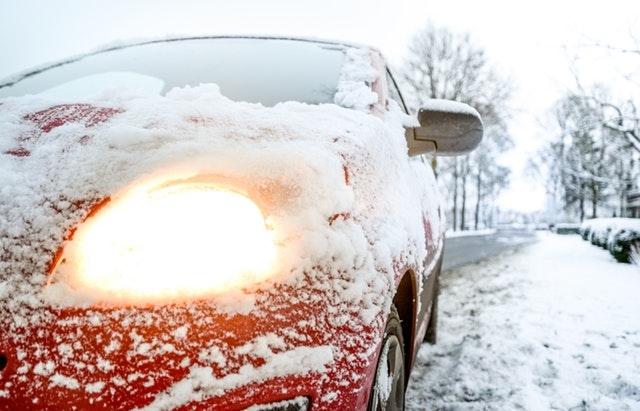Lone Working Risks and 3 Real World Examples with Practical Advice
When we first published the original lone working article the aim of the article was to provide guidance on the definition of who is a lone worker, addressing the risks that lone workers can face, how to assess and control the risks to lone workers and provide guidance on lone working solutions.
Most employers accept they have a legal and moral responsibility to manage the health, safety and welfare of employees who are deemed as Lone Workers. It is not illegal to work alone but how many employers effectively manage the health and safety hazards and risks associated with working alone.
This article update will look at actual case studies to help us understand how we can manage this especially important aspect of Health and Safety Management.
My first significant experience of a Lone Working incident as a Health and Safety Manager, occurred when I worked for a Paper Mill company who specialised in the manufacture of high-grade office paper e.g. A4 and A3 paper for printers and photocopiers etc. The paper-making process involved the use of chemicals and in this case the chemicals had to be stored, mixed and conveyed into the paper-making machine from a loft/mezzanine area located above the machine, a task carried out by a single operative i.e., a ‘Lone worker’. This task/activity was correctly risk assessed and lone working was identified as one of the significant hazards; a key risk control measure implemented for lone working was the use of a personal alarm systems.
Several hours into a nightshift, the Shift-Manager located in the production area became aware of the lone working monitoring station alerting to a potential emergency involving the lone working employee working in the chemical supply loft. Employees immediately responded to the alarm and found the employee lying unconsciousness on the floor, the quick response enabled emergency first-aid treatment to be rendered until the ambulance crew arrived. The individual collapsed due to a life threatening, non-work-related medical emergency and it was accepted the personal alarm system saved his life due to the transmitter he was wearing activating when he collapsed, and his body becoming prostrate.
This incident took place in the late 1990s and although the technology was around for this type of application back then it is much more advanced, effective and less cost prohibitive nowadays.
Lone Working Definitions
Let us remind ourselves what do we mean by a lone worker? The HSE define a lone worker as ‘someone who works by themselves without close or direct supervision’.
A lone worker can be found in all sectors and can include any of the following:
- Working alone at a fixed base, for example, retail unit, office, café, workshop, leisure centers etc. even though they may not be on their own because of customers in the building they are still classed as a lone worker.
- Working separately in the same building, for example, in a separate office to the warehouse, in a separate office from others, different area of the building to others.
- Working at home, even though they may have their family at home with them they are still classed as a lone worker, and they should be treated the same if they were in the workplace and to others who are also working at home.
- Volunteers carrying out work on their own, i.e., litter pickers, working in retail units, fundraising, coordinating meetings etc.
Working away from a fixed base (travelling, visiting) examples can include:
- Field based Engineering, Financial, Health & Safety and Environmental Consultants.
- Persons providing care in the community.
- Gas engineers.
- Electricians.
- Builders.
- Plumbers.
- Landscape gardeners.
- Forestry workers.
- Delivery drivers.
- Service workers including taxi drivers, estate agents, postal employees, sales employees.
Risks to Lone Workers
Lone Working, like any other hazard can lead to the risk of accidents and ill-health occurring. These are common but we often overlook or pay less attention to personal safety, e.g. Lone Female Workers can be more vulnerable, as can the travel aspect of lone working e.g., as Field Based Consultants, my colleagues and I travel extensively all year round often travelling to remote places in adverse weather, traffic and road conditions. Think of your own workforce, are they also exposed to these hazards, what controls do have in place, do you know where they are at all times? Mobile phones can be helpful, but what if they are in an area with poor or no phone signal, what if they cannot use the phone and are unable to raise the alarm e.g., if their vehicle veers of the road and they are injured.
What if an employee is abducted and cannot raise the alarm? Time could be an especially important factor. We can review this type of incident later.
So Lone Working is an identifiable hazard, but can have associated or secondary hazards, lets summarise:
- Violent, aggressive or sexual attack. Bear in mind, in many circumstances our Care Workers can be attacked by the persons to whom they provide care.
- Kidnapping.
- Operating dangerous machinery and equipment.
- Being involved in an accident and unable to raise the alarm.
- Driving in remote areas; Driving in inclement weather; Driving in winter or in the dark; Driving in an unfamiliar area; Driving on single track roads, or poor road conditions.
- Unable to track an employee’s exact location or whereabouts.
- Working with electricity, chemicals and other harmful substances.
A lone worker is also at risk from stress, mental health, and wellbeing issues through the effects of isolation for instance.
A lone worker can be more vulnerable if they were to fall unwell and suffer a medical crisis as they would not be able to summon the help as quickly as say someone who was not working alone, and this can also apply to if the lone worker was to sustain an injury from an accident. Furthermore, a lone worker may be more susceptible to sexual harassment and inappropriate behaviour.
When considering the risks that particularly could affect a lone worker consider the area, where is the workplace sited, is it rural, is it isolated, is it in a built-up area etc.
Lone Working Risk Assessments
As employers, we have a legal duty to assess risk, the risk assessment process is not only the fundamental requirement of successful health and safety management, but also the key component of an effective ‘Safe System of Work’ (SSOW). Your SSOW for Lone Working can be as follows:
- The completion of a suitable and sufficient risk assessment.
- The formulation and implementation of the safety control measures and procedures identified through the risk assessment process.
- The provision of information on the hazards identified in the assessment and the risks associated with these hazards, along with instructions and training on the control measures and procedures (including how to use equipment and technology e.g., lone working monitors and alarms).
- An effective means of monitoring the control measures and procedures that have been implemented.
- A means of reviewing your SSOW.
It is vitally important your control measures for Lone Workers includes the need to know where your employees are and you are able to communicate with them at any time, remembering mobile phones alone are not always reliable enough for this purpose.
Lone Worker Software & Devices
As indicated previously, the technology behind lone working alarms and software has developed significantly of over the years and continues to develop and to be improved. They are many solutions available for all applications and levels of risk, we shall consider these later.
Lone Working Case Studies
The principal aim of this updated article is to help us understand and learn how we can best manage Lone Working safely. These type of case studies are especially effective for highlighting to employers what they need to look out for when formulating and implementing Safe Systems of Work.
Case Study 1: Care Company fined £20 000 for their failure to safeguard a worker who became a victim of abduction, assault and rape.
The Company provides housing and community support to those with additional needs, they pled guilty to Health and Safety Breaches, specifically Regulation 3 (1) of the Management of Health and Safety at work Regulations and section 2 (1) and 33 (1) (c) of the Health and Safety At work Act.
The court heard that the service user abducted, assaulted, sexually assaulted and raped the employee during a visit to his home. He was sentenced to 8 years imprisonment.
The H&S Investigation Unit of the Crown Office and Procurator Fiscal Service (COPFS) subsequently referred the case to the Health & Safety Executive (HSE).
The HSE Investigation found that the company had failed to make a suitable and sufficient assessment of the risk the service user posed to female employees. They failed to identify and implement measures to mitigate these risks when providing support to the service user at his home.
Additionally, the investigation also uncovered a history and recent escalation of inappropriate behaviour from the service user. Reports of this were not recorded despite many of those who worked with him being aware or experience incidents.
Since the attack the company have implemented a new lone-working policy and support workers have been provided with smartphones to enable communication and track location.
A review of individual risk assessments for all service users was carried out to identify potential risks to staff and additional control measures put in place where appropriate.
Alistair Duncan Head of COPFS’s H&S Investigation Unit said:
“A young woman suffered a serious and traumatic assault and rape while acting in the course of her employment. The company could have prevented this is they had carried out a suitable and sufficient assessment of the risks posed to female employees. Lone workers are more vulnerable and employers should provide the necessary support to prevent such incidents. This prosecution should serve as a reminder to all employers that failure to establish the necessary policies can have serious consequences.”
Review
With the key points of a Safe System of Work highlighted earlier, consider how many were implemented prior to this horrific incident?
Case Study 2: Two firms were fined nearly £900 000 over the death of a security worker left in freezing conditions at a wind farm. The employee was found face down in the snow.
A construction company and the deceased’s employer admitted H&S breaches i.e., Sections 3 (1) and 2 (1) of the Health and Safety at work Act by failing to provide a reliable source of heat.
The Construction Company was fined £768,000 – reduced from £1.2m due to an early plea and the deceased’s employer was fined £100,800 which was reduced from £180,000. Both companies admitted failing to provide a reliable source of heating at the wind farm.
The tragic circumstances unfolded after a Met Office yellow ‘be aware’ warning for heavy snow across large areas of the country. The deceased’s family became concerned when he failed to return home from a 12-hour shift at the wind farm. They tried to call his mobile but the signal at the construction site was patchy and they could not make contact. A search was mounted after his family raised the alarm.
The court heard that two generators failed, leaving him without heat, light or electricity and there was no back-up supply.
A COPFS spokesman said: “the deceased’s death may heave been prevented if appropriate measures for workers to call for help in an emergency had been in place.” “By failing to ensure the safety of Lone Workers on such a remote site, both the Construction Company and the employee’s employer left them in unacceptable risk.” “This prosecution should remind all employers that failing to keep their employees safe can have fatal consequences and they will be held accountable for this failure.”
Review
The basis of this case and subsequent prosecution was failure to provide adequate heating and rightly so. However, as with most H&S related accidents/incidents they occur as a consequence of a combination circumstances coming together to create an undesirable event. By removing any one of these circumstances the tragedy may have been averted. Given the prosecution spokesman’s comments, a more effective means of raising the alarm and/or communication could have prevented this death.
It came down to the deceased’s family trying and make contact when he didn’t return from home from work when expected.
Case Study 3: This case looks at how an employer can get it right when it comes to managing lone workers safely.
A large UK Construction company has led their sector of the construction industry when it comes to recognising and actively managing the risks associated with lone working. They placed lone working and personal safety firmly on their agenda. Initially, they consulted with their employees in the sales and marketing department where the majority of lone working occurred, this allowed the workers to share their concerns and ideas.
The information gathered became an integral part of the risk assessment process and subsequent control measures. Within their written polices, procedures and safe working practices the company set out actions that are taken to ensure the safety of lone workers. They have implemented a safe by design specification for site sales and marketing suites that ensures line of sight, security of personal valuables, adequate lighting and secondary egress etc.
Managers are required to complete their own risk assessments and are provided guidance and training to ensure they meet the safety standards. Regular communication and consultation with the employees by way of face-to-face training were proactive, practical advice is provided and again colleagues are invited to share ideas, experiences and concerns that makes up the basis for the risk assessment review process.
The company reviews their approach and controls on a regular basis (Safe System of Work) which matches the technological advances (alarms and communications systems). The company have implemented a lone worker system whereby workers wear a lone worker device that meets the British Standard accreditation and have included advice and guidance on how to gain the best from the devices used in their training.
The company acknowledges that keeping personal safety on the agenda can be a challenge when incidents are few and far between, but ensuring they remind people of the ways they can keep themselves safe when working alone and supporting them is the way to keep risk low.
Review
What makes this company stand out in terms of effective H&S Management of Lone Workers?
What they have done is carried out risk assessment and passed a copy to their employees. Let there be no mistake, risk assessments are important, but they should be an element within a safe system of work. Let us remind ourselves of the key elements within the SSOW we highlighted earlier.
- The completion of a suitable and sufficient risk assessment, with consultation and communication with lone workers.
- The formulation and implementation of the safety control measures and procedures identified through the risk assessment process embracing the latest technology that meets British Standards, with consultation and communication with Lone Workers.
- The provision of information on the hazards identified in the assessment and the risks associated with these hazards, along with instructions and training on the control measures and procedures (including how to use equipment and technology e.g., lone working monitors and alarms).
- An effective means of monitoring the control measures and procedures that have been implemented.
- A means of reviewing the SSOW, you’ve guess with regular consultation and communication with Lone Workers.
Summary
This revisited article is not about carrying out risk assessment or supply of a mobile phone, or an alarm to lone workers, its is to highlight the significance of how dangerous lone working can be, the potential consequences when things go wrong, not only for lone workers, but for employers if prosecuted and the heavy fines and possibly imprisonment for Directors and underlying uninsured costs and the reputational risk that goes with it, not to mention potential civil action by employees and increased insurance premiums.





